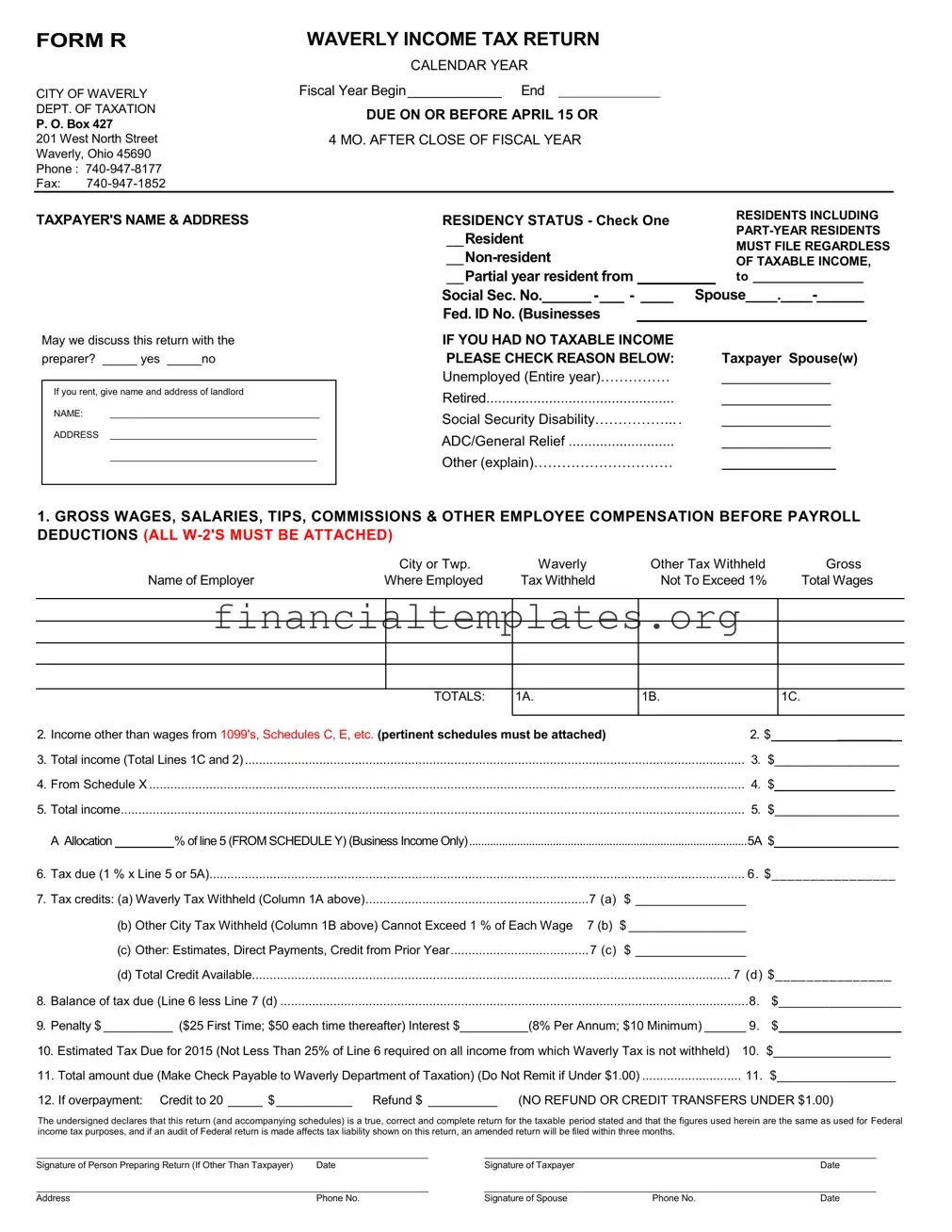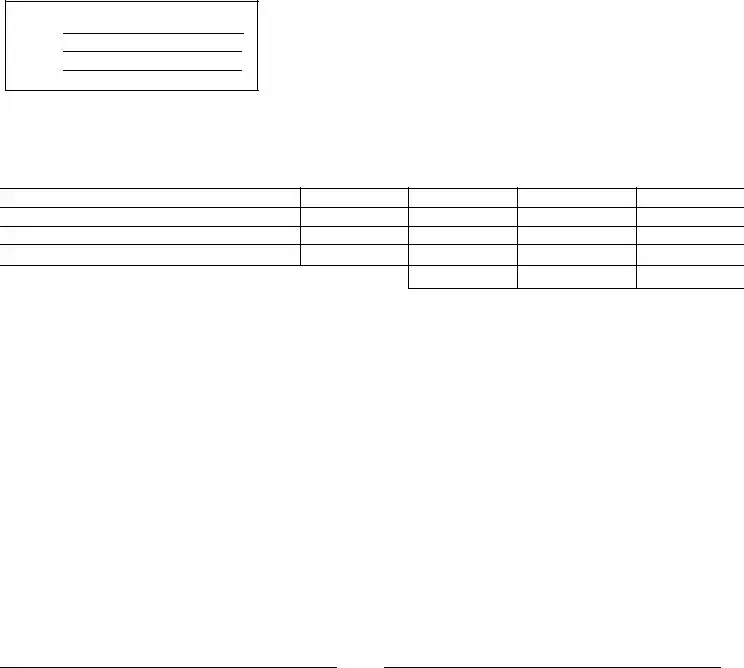The Federal 1040 Tax Return form, used by individuals to file their annual income tax with the Internal Revenue Service (IRS), shares similarities with the Waverly City Tax R form. Both forms are designed to calculate taxes owed based on the individual's gross income, including wages, salaries, tips, and other forms of compensation. Additionally, each form provides space for taxpayers to claim deductions or credits that could reduce their overall tax liability. However, the Federal 1040 form is used for national tax obligations, while the Waverly form is specific to local city taxes.
The Schedule C form, often used by self-employed individuals or sole proprietors to report their business income and expenses to the IRS, also parallels the Waverly City Tax R form in its purpose of reporting income. Like the Waverly form, which includes sections for income from 1099s and Schedules C and E, Schedule C is aimed at calculating the taxable income after business expenses are subtracted. This similarity underscores the forms’ roles in ensuring accurate tax reporting for different sources of income.
The 1099-MISC form, issued to freelancers or independent contractors to report income received for services performed, relates to the Waverly City Tax R form in its handling of non-wage income. Both documents require individuals to report earnings not subject to standard payroll tax withholdings, thereby aiding in the accurate calculation of taxes due based on a broader spectrum of income sources. This facilitates comprehensive tax reporting and compliance for various types of income earners.
The W-2 form, which employers provide to employees to report annual wages and the amount of taxes withheld, has a direct connection to the Waverly form. The Waverly City Tax R form necessitates the attachment of all W-2s to verify gross wages, salaries, and tax withheld, mirroring the process of how employment income is reported and taxed at both the local and federal levels. This ensures that taxpayers receive credit for any taxes already paid to the government.
The State Individual Income Tax Return forms, which vary by state, share a common goal with the Waverly City Tax R form: assessing tax based on income at a jurisdictional level. Both forms require detailed income reporting and allow for deductions or credits specific to their governing body's tax laws. The primary difference lies in their scope, with state forms addressing state taxes and the Waverly form focusing on municipal taxes.
The Estimated Tax Payment form (1040-ES), used for paying estimated taxes on income not subject to withholding, is akin to the section of the Waverly City Tax R form that addresses estimated tax due for the following year. Both documents anticipate future income and aim to prevent underpayment penalties by calculating a provisional tax amount based on projected earnings. This parallels their function of facilitating ongoing tax payments throughout the year.
The Schedule E form, utilized to report income from rental property, royalties, partnerships, S corporations, estates, trusts, and residual interests in REMICs, reflects aspects of the Waverly City Tax R form's inclusion of income beyond wages. Like the Waverly form, which requires attachment of pertinent schedules for additional sources of income, Schedule E addresses the complexity of taxing diverse income types, ensuring comprehensive income reporting for tax purposes.
The Schedule SE form, necessary for calculating the self-employment tax owed by individuals who work for themselves, shares similarities with the Waverly form's broader approach to income reporting. Both forms cater to individuals with varied income sources, including self-employment, and ensure that the appropriate taxes are calculated and paid on all forms of income, reflecting a thorough taxation process.
The Local Earned Income Tax Return, which residents of certain municipalities are required to file in addition to federal and state returns, closely matches the Waverly City Tax R form in function and purpose. Both forms assess taxes due based on income earned within a specific locality, ensuring that taxpayers contribute to the funding of local services and infrastructure. This highlights the role of local tax forms in maintaining community resources and services.
The Property Tax Return, though primarily concerned with real estate and property values, also complements the income-focused Waverly City Tax R form in the broader context of tax obligations. While the Property Tax Return calculates taxes due based on property assessment, the Waverly form deals with income taxation. Together, they represent the spectrum of tax liabilities individuals may encounter, encompassing both property and income taxes at various governmental levels.

